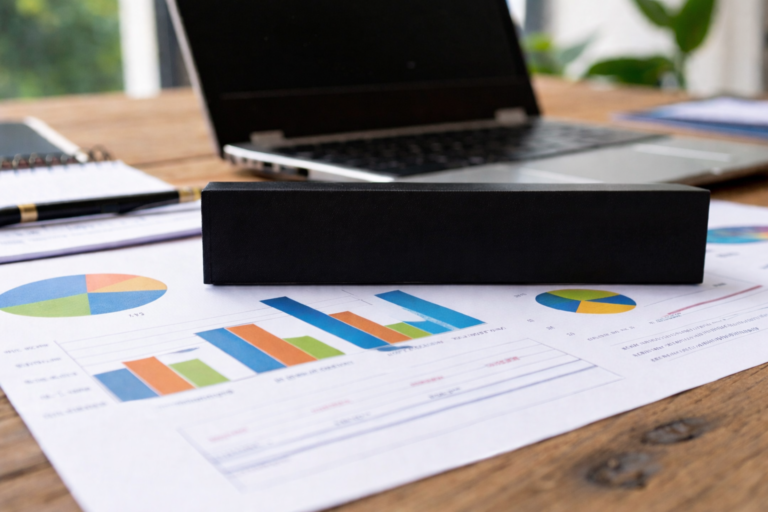In 2025, data is at the core of every industry. Whether it’s Netflix suggesting your next favorite show, a bank detecting suspicious transactions, or an e-commerce site predicting what you’ll buy next, data scientists are the people making it all happen. They use data to solve problems, build smart systems, and help businesses make better decisions.
If you’re wondering what a data scientist really does, what skills are needed, or how their role is different from a data analyst, this blog is for you. Whether you’re a student, a job seeker, a recruiter, or a hiring manager, you’ll find everything you need here.
We’ll walk you through:
- What data science means today
- Key roles and responsibilities of a data scientist
- A sample job description
- How to list data science skills on your resume
- And how data scientists compare with data analysts
Plus, we’ll use real examples and industry insights to make things easy to understand. Let’s dive in and explore the world of data science!
What is Data Science?
Data science is the process of making sense of data to solve real-world problems. It’s like being a detective but instead of solving crimes, you’re solving business challenges using numbers, patterns, and technology.
Data scientists work with all kinds of data like numbers in spreadsheets (structured data) or things like customer reviews and social media posts (unstructured data). They use tools like statistics, machine learning, and programming to find useful insights hidden in the data.
Real-Life Examples of Data Science:
- Banking: Detecting fraud by spotting unusual spending patterns.
- Online shopping: Recommending products based on what you’ve browsed or bought before.
- Manufacturing: Predicting when a machine will break down so it can be fixed before it fails.
- Healthcare: Finding signs of disease early by analyzing patient data.
Why Is It Important?
Companies that use data science well are seeing big results. According to McKinsey State of AI report, businesses using data and AI tools grow 25% faster and are 30% more profitable than those that don’t.
This is why data scientists are in such high demand today and why learning about their roles and responsibilities is more important than ever.
Who is a Data Scientist?
A data scientist is someone who turns raw data into valuable information that helps businesses make smart decisions. They are part coder, part statistician, and part storyteller.
Think of a data scientist as a translator between data and decision-making. They collect large amounts of information, clean and organize it, analyze patterns, and then explain their findings in a way that others can understand. Whether it’s recommending what you should watch next on Netflix or helping doctors give better care to patients—data scientists are behind it all.
What Do They Study?
Most data scientists come from educational backgrounds like:
- Computer Science – to understand how software and systems work
- Statistics – to know how to interpret numbers and trends
- Mathematics – to solve complex problems using logic and formulas
- Engineering – to think analytically and build practical solutions
But formal education isn’t everything—many data scientists also learn skills through bootcamps, online courses, and real-world experience.
What Do Data Scientists Do?
Here’s a breakdown of their key responsibilities:
Core Responsibilities:
- Collect, clean, and organize data from diverse sources (e.g., customer records, sales logs).
- Perform exploratory data analysis (EDA) to uncover patterns and trends.
- Design and implement machine learning models to solve business problems.
- Translate technical findings into clear business solutions for stakeholders.
- Create visualizations using tools like Tableau or Power BI to communicate insights.
Technical Responsibilities:
- Write advanced SQL queries and Python/R scripts for data manipulation.
- Train, test, and validate machine learning algorithms (e.g., using Scikit-learn, TensorFlow).
- Build and manage data pipelines for scalability and reproducibility (e.g., with Apache Spark).
- Develop dashboards and visualizations to present complex data clearly.
Strategic Responsibilities:
- Align data projects with business goals, such as improving customer retention or optimizing operations.
- Conduct A/B testing to evaluate campaigns or product features.
- Forecast trends using time-series or regression models (e.g., predicting sales or demand).
- Advise leadership on data-driven strategies to drive growth and efficiency.
These responsibilities reflect the dynamic, high-impact nature of data scientist roles and responsibilities in 2025, blending technical expertise with strategic insight to drive organizational success.
What Tools Do They Use?
A data scientist’s toolbox is filled with powerful tools to help them work with data effectively:
- Programming Languages: Python, R, and SQL are the most commonly used for data analysis and automation.
- Data Visualization Tools: Tableau, Power BI, and Matplotlib help create charts and dashboards to make data easy to understand.
- Machine Learning Libraries: Tools like TensorFlow and Scikit-learn allow them to build smart systems that learn from data—like predicting future trends or detecting fraud.
- Cloud Platforms: Services like AWS, Google Cloud, or Microsoft Azure help store, manage, and analyze data at a large scale.
Job Demand and Salary
Data science is one of the most in-demand careers today. According to a 2023 Glassdoor study:
- Data Scientist was ranked the 3rd best job in the U.S.
- The median base salary was $126,000 USD
- There were over 80,000 open roles globally, and this number keeps growing
This high demand is because companies across industries—tech, finance, healthcare, e-commerce, and more—need skilled professionals who can make sense of data and turn it into business value.
Want to explore other tech roles? Check out System Engineer Roles and Responsibilities or DevOps Engineer Roles and Responsibilities.
Data Scientist Roles and Responsibilities
A data scientist is responsible for collecting, cleaning, and analyzing large volumes of data to uncover patterns and generate actionable insights. Their role involves building predictive models using machine learning algorithms, performing statistical analysis, and visualizing data to support business decisions.
They collaborate with cross-functional teams to align data solutions with organizational goals, deploy models into production, and continuously monitor performance. Data scientists also stay updated with emerging tools and techniques to drive innovation and improve data-driven strategies.
Let’s explore the data scientist roles and responsibilities in detail below-
Core Responsibilities
These are the daily tasks every data scientist performs. They form the foundation of the role and ensure that the data used is accurate, meaningful, and actionable.
1. Collecting, Cleaning, and Organizing Data
Before any analysis or prediction happens, a data scientist needs to prepare the data. This involves:
- Collecting data from different sources (like websites, databases, sensors, or spreadsheets).
- Cleaning data, which means fixing missing values, removing duplicates, correcting errors, and making sure everything is in the right format.
- Organizing the data so it’s easy to work with.
Example: In a retail company, a data scientist might combine data from online and in-store sales to get a full picture of customer behavior. This helps them see trends like weekend shopping spikes.
2. Performing Exploratory Data Analysis (EDA)
This is the process of examining the data to discover patterns, trends, and relationships. It helps answer questions like: What’s happening in the data? What might be influencing it?
Example: An e-commerce site notices a lot of people leave during checkout. A data scientist investigates this using graphs and summaries and finds that a long payment form might be causing users to drop off.
3. Designing Machine Learning Models
Once the data is ready, data scientists use it to train machine learning models—these are smart systems that learn from past data and can predict future outcomes.
Example: A fashion company wants to know which products will sell best during Christmas. A data scientist builds a model that uses past holiday sales data to make accurate predictions.
4. Translating Findings into Business Solutions
It’s not enough to have results—data scientists must explain what the numbers mean in simple terms. This helps other teams make informed decisions.
Example: After studying marketing campaigns, a data scientist might say, “Instagram ads worked better than Facebook, increasing sales by 15%.” That’s a clear takeaway for the marketing team.
5. Communicating with Visualizations
To help others understand the data, data scientists create visual tools like charts, graphs, and dashboards that show important trends and metrics.
Example: A sales dashboard might show daily sales per city. The regional manager can easily see which locations are performing well.
Technical Responsibilities
These tasks require advanced technical skills, especially in programming, mathematics, and automation. This is where a data scientist applies the science in “data science.”
1. Writing Advanced SQL Queries and Scripts
SQL (Structured Query Language) is used to ask questions from databases and get specific data.
Example: A bank wants to find customers who missed two or more EMI payments. A data scientist can write a SQL query to identify them quickly.
2. Training and Testing Machine Learning Models
Models are like smart formulas. Data scientists train them on known data, and test them on new data to check how well they perform. The goal is accuracy and reliability.
Example: A delivery company builds a model to suggest the fastest delivery route. Testing the model helps ensure it gives the best routes under different traffic conditions.
3. Visualizing Complex Data
Sometimes data is hard to understand at first glance. Data scientists use advanced tools to make it visual and clear.
Example: In healthcare, they may visualize how recovery rates differ by hospital. This helps identify which hospitals provide better treatment.
4. Managing Data Pipelines
A data pipeline is a set of steps that move data from source to destination—cleaning and processing it on the way. It ensures the right data gets to the right place, on time.
Example: For fraud detection in banking, the system must analyze data in real time. Data pipelines make that possible by processing thousands of transactions per second.
Fun Fact: 85% of data scientists spend 20% or more of their time just managing data pipelines and cleaning data (O’Reilly AI Report 2025). It’s a huge part of the job.
Strategic Responsibilities
These tasks focus on long-term thinking and helping the business grow using data. Data scientists play a key role in strategy and decision-making.
1. Aligning Data with Business Goals
Data scientists work closely with business leaders to understand the company’s goals and define how data can help achieve them.
Example: A data scientist at Netflix might be asked why users cancel subscriptions. They explore the data, find reasons (e.g., fewer new shows), and suggest fixes.
2. Conducting A/B Testing
A/B testing means comparing two versions of something (like a webpage) to see which performs better.
Example: A company tries two different landing page designs. Data scientists track which page leads to more signups and recommend the winning version.
3. Forecasting Trends
Using historical data and predictive models, data scientists help predict future trends in demand, sales, user behavior, etc.
Example: An FMCG company wants to know how much stock to order before IPL season. A data scientist forecasts demand using past sales and external data.
4. Advising Leadership
Data scientists turn data into strategic recommendations. Their insights often reach the highest levels of leadership.
Example: A data scientist might discover a new market segment that’s buying more of a product. They recommend focusing marketing efforts there and the leadership acts on it.
Check out the blog on Project Manager roles and responsibilities here.
Data Scientist Job Description
A job description (JD) for a data scientist outlines the key responsibilities, required skills, qualifications, and experience expected from the role. It helps both employers and job seekers align expectations and understand the scope of work.
A well-written JD also highlights the impact the role will have on the business, the tools and technologies used, and potential career growth paths. Whether you’re hiring or applying, the JD serves as a roadmap to what success looks like in a data science role.
Check out the detailed sample data scientist job description below-
Data Scientist Job Description
Job Title: Data Scientist
Department: Data & Analytics / Business Intelligence / Engineering
Location: [Remote / Hybrid / On-site] — India or Global
Job Type: Full-Time | Permanent
Role Overview
A Data Scientist is responsible for turning raw data into valuable insights that drive strategic decisions. You will work with cross-functional teams to understand business needs, explore large datasets, build predictive models, and communicate findings that shape product, marketing, operations, and customer strategies.
In this role, you will combine your skills in statistics, programming, data engineering, and machine learning to solve real-world problems. Your work will directly impact business performance, customer experience, and innovation initiatives.
Key Responsibilities
1. Data Preparation & Analysis
- Collect, clean, and preprocess large datasets from internal and external sources.
- Perform exploratory data analysis (EDA) to uncover trends, anomalies, and patterns.
2. Model Building & Optimization
- Design and train machine learning models for classification, regression, forecasting, clustering, etc.
- Validate and tune models using performance metrics (e.g., accuracy, precision, recall, RMSE).
3. Business Insight & Strategy
- Translate data findings into actionable business insights and present them to stakeholders.
- Partner with product, sales, and marketing teams to develop data-driven solutions.
4. Visualization & Reporting
- Create interactive dashboards and reports using tools like Tableau, Power BI, or Python (matplotlib, seaborn).
- Monitor model performance and update as needed based on new data or business changes.
5. Data Infrastructure & Automation
- Collaborate with data engineers to build and maintain ETL pipelines.
- Automate repetitive tasks and processes to improve data reliability and workflow efficiency.
6. Experimentation & A/B Testing
- Design and analyze A/B tests and controlled experiments to validate business hypotheses.
Qualifications & Experience
- Bachelor’s or Master’s degree in Computer Science, Data Science, Statistics, Mathematics, or a related field.
- 1–5 years of professional experience in a data analyst, data scientist, or ML engineer role.
- Strong foundation in statistics, probability, and data modeling.
- Proficiency in Python, R, or SQL. Familiarity with cloud platforms (AWS, Azure, GCP) is a plus.
Key Skills Required
- Data wrangling and preprocessing
- Machine learning algorithms (e.g., linear regression, decision trees, clustering, NLP)
- Statistical analysis and hypothesis testing
- Data visualization (Tableau, Power BI, matplotlib, seaborn)
- Working with databases and querying languages (SQL, NoSQL)
- Communication and storytelling with data
- Familiarity with tools like Jupyter, Git, Airflow, or Spark is a bonus
Preferred Traits
- Critical thinker with strong problem-solving abilities
- Passion for data and a curiosity to explore hidden insights
- Ability to work independently and in team settings
- Comfort with ambiguity and fast-changing environments
Career Growth Opportunities
- Senior Data Scientist
- Machine Learning Engineer
- Data Science Manager
- AI/ML Researcher
- Product Data Analyst
If you love solving complex problems, working with data, and making a tangible impact on business outcomes, this is the role for you. Join our team of innovators and help shape the future with data.
Discover our Job Description category to find out more about to explore various job description templates and roles and responsibilities of popular careers in 2025.
How to Highlight Data Scientist Roles and Responsibilities in Your Resume?
Your resume is your personal pitch and for data science roles, it must speak the language of impact, results, and technical depth. Here’s how to make your data scientist experience stand out to hiring managers and applicant tracking systems (ATS):
Use Strong Action Verbs
Start each bullet point with dynamic, result-oriented verbs that reflect ownership and impact. Examples include:
- “Built”
- “Designed”
- “Implemented”
- “Optimized”
- “Collaborated”
- “Deployed”
These verbs instantly convey your hands-on experience with tools and techniques, making your resume sound confident and active.
Quantify Your Achievements
Numbers catch attention. Instead of vague claims like “Improved model accuracy,” say:
- “Improved model accuracy by 18%, resulting in $50K cost savings per quarter.”
- “Developed recommendation engine that increased user engagement by 27%.”
Quantifying results proves your contribution and makes your experience more credible.
Tailor Your Resume to the Job Description
Many companies use ATS software to scan resumes for keywords. To pass the initial screening:
- Mirror the exact terms used in the job post: e.g., “machine learning,” “ETL pipeline,” “A/B testing.”
- Customize each application based on the company’s priorities (e.g., product analytics vs. fraud detection).
Highlight the Tools & Technologies
Recruiters look for specific tech stack proficiency. Make sure to list:
- Programming languages: Python, R, SQL
- ML Libraries: Scikit-learn, TensorFlow, XGBoost
- Visualization tools: Tableau, Power BI, matplotlib
- Cloud platforms: AWS, GCP, Azure
- MLOps tools: MLflow, Airflow, Docker
Resume-Worthy Examples:
- “Built a customer segmentation model using Python and Scikit-learn, increasing retention by 18% for a 10,000-user base.”
- “Automated monthly reporting with SQL and Tableau, reducing manual workload by 40% and improving executive decision-making speed.”
- “Collaborated with data engineers to deploy real-time fraud detection models on AWS, analyzing over 1M transactions/day with 98% accuracy.”
Pro Tip: A 2024 LinkedIn report revealed that resumes with quantified outcomes are twice as likely to land interview calls.
Data Scientist vs. Data Analyst: What’s the Difference?
These two roles often overlap but they serve distinct purposes. Here’s a side-by-side breakdown to clarify:
| Criteria | Data Scientist | Data Analyst |
| Objective | Build predictive models and automate decision-making | Analyze past data to identify trends and insights |
| Tools | Python, R, TensorFlow, Spark, MLflow | SQL, Excel, Tableau, Power BI |
| Output | Machine learning models, forecasts, automation | Dashboards, reports, descriptive summaries |
| Business Impact | Strategic and long-term | Operational and short-term |
| Technical Complexity | High (coding, modeling, deployment) | Moderate (queries, visuals, reporting) |
| Example | Predict next quarter’s sales and optimize inventory | Analyze last quarter’s sales performance by region |
Key Insight: A 2025 Burtch Works survey found that 65% of employers demand ML expertise in data scientist roles, compared to only 30% for data analysts. This highlights the higher technical bar and deeper strategic involvement expected from data scientists.
Where Do Data Scientists Fit in 2025’s Hiring Landscape?
Data scientists are among the most in-demand professionals across industries. Here’s why:
Growth Outlook
According to a 2025 Indeed report, the demand for data scientists is projected to grow 22% through 2030, outpacing most tech roles.
Industry-Wise Demand
- Fintech: Fraud detection, credit scoring, and personalized financial services.
- Healthcare: Predictive diagnostics, patient risk modeling, and hospital resource planning.
- E-commerce: Recommendation engines, customer churn prediction, and dynamic pricing.
- Logistics & Supply Chain: Route optimization, demand forecasting, and warehouse automation.
Hiring Tip for Recruiters
Use case studies, take-home challenges, or live coding interviews to assess candidates’ real-world problem-solving skills—not just theoretical knowledge. Partnering with a talent solutions expert or RPO firm like Taggd can simplify and speed up hiring for large-scale or niche data roles.
For Aspiring Data Scientists: Where to Start?
Breaking into data science is possible with the right mix of education, projects, and exposure.
Entry Points
- Campus Recruitment: Major tech companies like Google, Amazon, and Indian unicorns in fintech and edtech often hire data scientists through internships or final-year placements.
- Hackathons & Kaggle Competitions: Great for showcasing your skills.
- Bootcamps & Certifications: Platforms like Coursera, Great Learning, and UpGrad offer solid programs in data science and ML.
A 2024 Forbes study noted that 60% of entry-level data science hires came from campus placements or internship conversions—a great way to get your foot in the door.
Top Skills for Data Scientists in 2025
To thrive in data scientist roles and responsibilities, you’ll need both technical prowess and strategic thinking. Here’s what’s trending:
Technical Skills
- Programming (Python, R, SQL)
- Python is required in80% of job listings(Stack Overflow, 2024).
- SQL is essential for querying relational databases.
- Machine Learning and Statistics
- Know your algorithms (regression, decision trees, clustering, neural nets).
- Use libraries like Scikit-learn, TensorFlow, or PyTorch.
- Data Visualization
- Tools: Tableau, Power BI, matplotlib, seaborn.
- Skill: Turn raw data into executive-friendly visuals.
- Cloud & Big Data Tools
- AWS, Azure, GCP, Spark, Snowflake for storage and compute.
- 70% of companies now store and process data in the cloud (Gartner, 2025).
- MLOps and Model Deployment
- Tools: MLflow, Docker, Airflow, Kubeflow.
- Automate model monitoring and continuous integration.
Soft Skills
- Communication: Explain technical ideas to non-technical audiences.
- Problem-Solving: Tackle ambiguity with structured thinking.
- Teamwork: Work closely with engineers, PMs, and analysts.
Bonus Insight: According to LinkedIn (2025), 45% of data science roles now require cloud or MLOps skills as part of the job description.
Wrapping Up
Data scientists are no longer just “data people.” They are strategic enablers of innovation, bridging the gap between raw data and real-world action. Their ability to build smart systems, uncover patterns, and drive business outcomes makes them one of the most critical hires in today’s digital-first economy.
Whether you’re:
- An aspiring professional looking to enter this space,
- A hiring manager seeking the right talent, or
- A business leader wanting to scale your data capabilities—
Understanding the depth and scope of data scientist roles and responsibilities is your first step toward success in a data-driven world.
Ready to Hire Data Scientists or Advance Your Career?
For Employers: Taggd’s AI-powered recruitment solutions streamline your hiring process, matching you with skilled accountants who align with your organization’s goals and culture. Find the perfect fit faster with our data-driven approach.
For Job Seekers: Join our Career Circles and get matched to roles that elevate your skills and ambitions.
Explore Taggd for more details.









